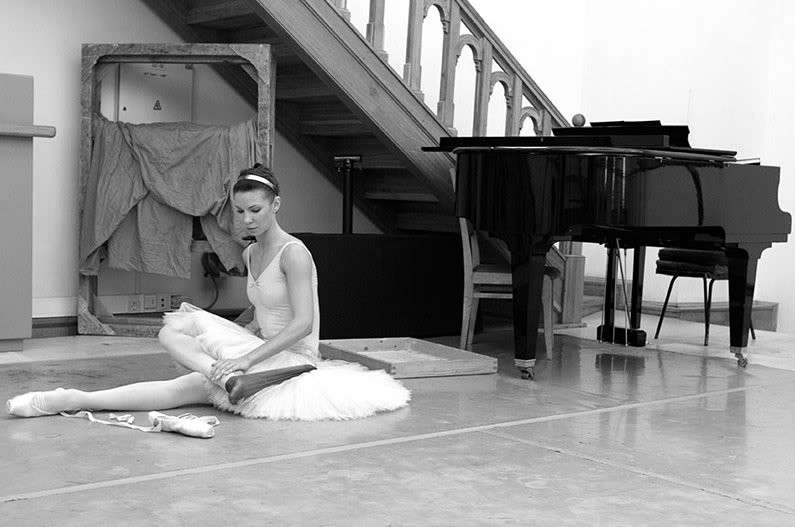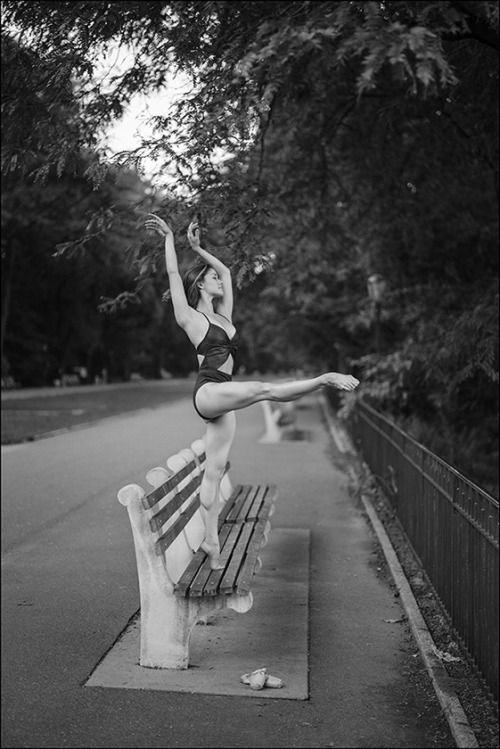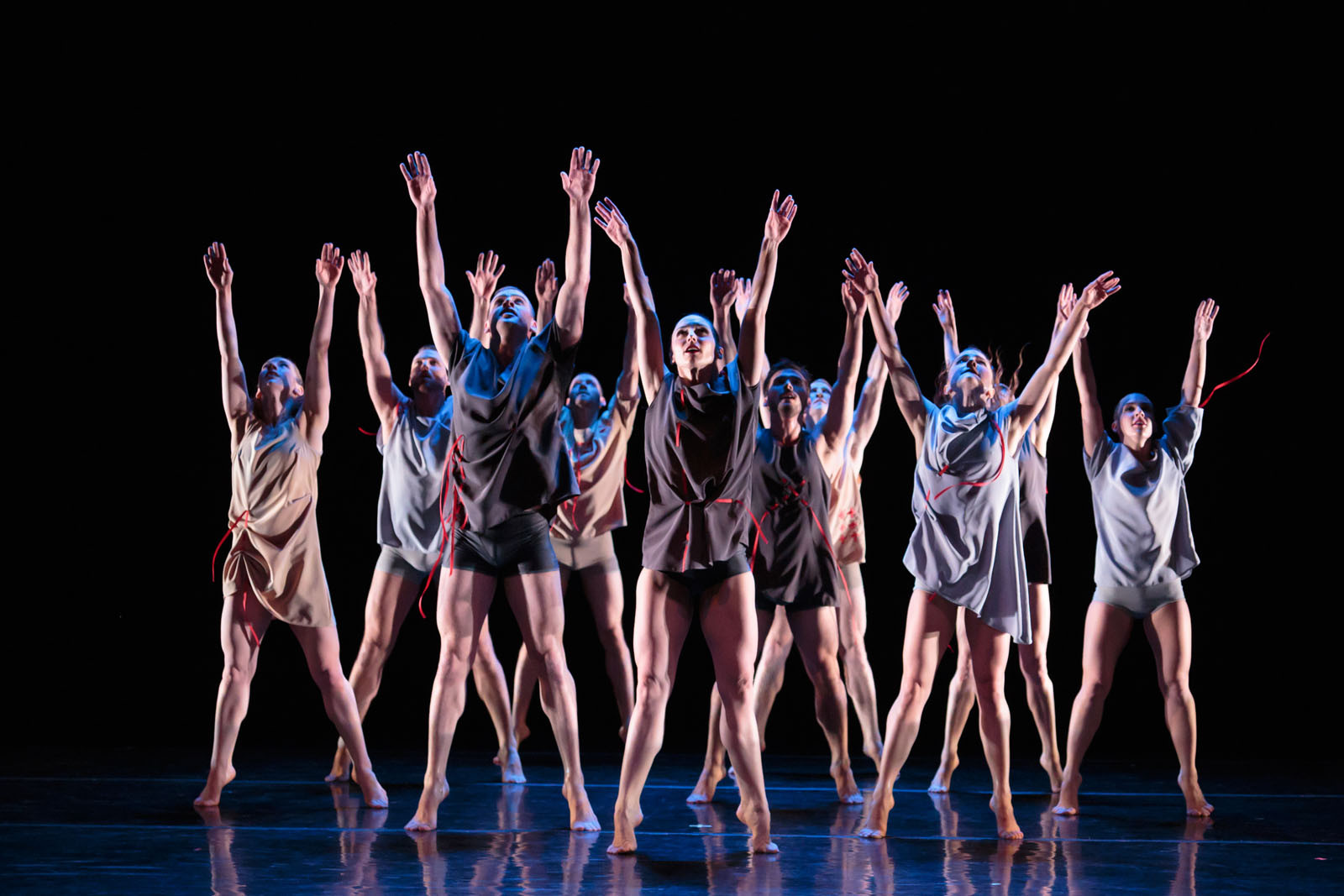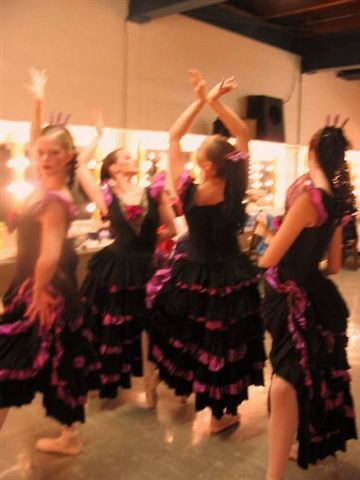Are you questioning your path in dance? At ten-dance.com, we understand that the journey isn’t always easy. We’re here to help you explore your options, rediscover your passion, and make informed decisions about your future in dance. Whether you’re a beginner, a seasoned performer, or someone simply seeking the joy of movement, we offer resources and support to help you navigate your dance journey and rediscover your love for movement, artistry, and expression.
1. Identifying Your Reasons: Why Are You Considering Quitting Dance?
Identifying why you are considering quitting dance is paramount. Are you feeling burned out, injured, or disillusioned? Understanding the root cause of your desire to stop dancing is the first step towards finding a solution and making an informed decision.
- Burnout: Are you experiencing physical and emotional exhaustion from overtraining, performance pressure, or a lack of variety in your dance routine? Burnout is a common issue among dancers, especially those pursuing dance professionally.
- Injuries: Have you sustained an injury that is preventing you from dancing or causing chronic pain? Injuries can be incredibly frustrating and discouraging for dancers, and it’s important to address them properly.
- Lack of Progress: Do you feel like you’re not improving despite your hard work and dedication? A plateau in progress can be disheartening, leading to feelings of inadequacy and a desire to quit.
- Financial Strain: Are the costs associated with dance classes, costumes, travel, and other expenses becoming too much to handle? The financial burden of dance can be significant, especially for those pursuing it at a higher level.
- Change of Interests: Have your passions and interests shifted away from dance towards other activities or pursuits? It’s natural for interests to evolve over time, and it’s okay to explore new paths.
- External Pressure: Are you feeling pressure from family, friends, or teachers to pursue a different career or lifestyle? External expectations can sometimes clash with your own desires and goals.
- Loss of Joy: Have you stopped enjoying dance as much as you used to? If dance has become a source of stress or unhappiness, it may be time to re-evaluate your relationship with it.
Understanding the reasons behind your desire to quit dance allows you to address the underlying issues and explore potential solutions. It may involve adjusting your training schedule, seeking professional help for injuries, exploring new dance styles, or simply taking a break to recharge and rediscover your passion. Remember, it’s okay to re-evaluate your path and make changes that align with your well-being and happiness.
2. The Impact of Dance on Your Mental and Physical Well-being
Dance significantly impacts your mental and physical well-being. It’s crucial to assess whether dance is currently serving as a positive or negative force in your life.
- Mental Health Benefits:
- Mood Regulation: Dancing releases endorphins, which have mood-boosting effects and can help alleviate symptoms of anxiety and depression.
- Stress Reduction: Dance provides an outlet for releasing pent-up emotions and reducing stress levels.
- Self-Esteem: Mastering new dance steps and performing in front of an audience can boost self-confidence and self-esteem.
- Cognitive Function: Learning and memorizing choreography can improve cognitive function, memory, and concentration.
- Physical Health Benefits:
- Cardiovascular Health: Dancing elevates your heart rate, improving cardiovascular health and reducing the risk of heart disease.
- Strength and Endurance: Dance builds strength, endurance, and flexibility, enhancing overall physical fitness.
- Coordination and Balance: Practicing dance steps improves coordination, balance, and proprioception (awareness of your body in space).
- Weight Management: Dancing burns calories and helps maintain a healthy weight.
Consider how dance affects your overall well-being. Does it leave you feeling energized, happy, and confident, or does it contribute to stress, anxiety, and physical pain? If dance is primarily a source of joy and fulfillment, it may be worth exploring ways to overcome the challenges you’re facing. However, if it’s consistently detrimental to your well-being, it may be time to consider other options.
According to a study by the American Dance Therapy Association, dance/movement therapy can be an effective treatment for depression and anxiety.
 Dance and mental well-being
Dance and mental well-being
3. Exploring Alternative Paths Within Dance
Exploring alternative paths within dance can reignite your passion. Instead of quitting altogether, consider different styles, roles, or ways to engage with dance that might be more fulfilling.
- Try a New Style:
- Ballet: Focuses on technique, precision, and grace.
- Jazz: Energetic and expressive, often incorporating improvisation.
- Hip Hop: Dynamic and rhythmic, with roots in street dance.
- Contemporary: Combines elements of ballet, jazz, and modern dance, emphasizing fluidity and emotion.
- Tap: Percussive dance style using shoes with metal taps.
- Ballroom: Partner dances like waltz, tango, and foxtrot.
- Consider Different Roles:
- Choreographer: Create original dance pieces for performances or events.
- Dance Teacher: Share your knowledge and passion with students of all ages and levels.
- Dance Therapist: Use dance as a therapeutic tool to help individuals address emotional, mental, and physical challenges.
- Dance Writer/Blogger: Share your insights, reviews, and experiences with the dance community through writing.
- Dance Administrator: Work behind the scenes in dance companies or organizations, managing logistics, fundraising, and marketing.
- Other Ways to Engage:
- Community Dance Classes: Take recreational dance classes for fun and fitness.
- Dance Workshops: Attend workshops to learn new techniques and styles from experienced instructors.
- Dance Performances: Watch live dance performances to gain inspiration and appreciation for the art form.
- Dance Films/Documentaries: Explore the history and evolution of dance through films and documentaries.
- Online Dance Communities: Connect with other dancers online through forums, social media groups, or virtual classes.
By exploring these alternative paths, you might discover a new passion within the world of dance that you never knew existed. It’s possible to find a way to engage with dance that aligns with your current interests, skills, and goals.
4. The Financial Realities of a Dance Career
Understanding the financial realities of a dance career is crucial. Professional dance is notoriously competitive and often doesn’t provide a stable income.
- Low Salaries: Many professional dancers earn modest salaries, especially early in their careers.
- Irregular Income: Dance work is often project-based, leading to periods of unemployment between gigs.
- High Expenses: Dancers incur significant expenses for classes, rehearsals, costumes, travel, and healthcare.
- Limited Benefits: Many dance jobs don’t offer health insurance, retirement plans, or other benefits.
- Need for Side Hustles: Many dancers supplement their income with part-time jobs or freelance work.
Before committing to a dance career, it’s important to assess your financial situation and determine if you can realistically support yourself. Consider creating a budget, exploring funding opportunities, and developing a backup plan in case dance doesn’t provide a sustainable income.
5. The Demands on Your Time and Energy as a Dancer
Being a dancer requires immense time and energy. Rigorous training schedules, rehearsals, and performances can take a toll on your physical and mental health.
- Long Hours: Dancers often spend long hours in the studio, rehearsing and perfecting their technique.
- Physical Exertion: Dance is physically demanding, requiring strength, endurance, flexibility, and coordination.
- Travel Requirements: Professional dancers may need to travel frequently for auditions, rehearsals, and performances.
- Performance Pressure: Dancers face constant pressure to perform at their best, which can lead to stress and anxiety.
- Risk of Injury: Dance carries a high risk of injury, which can sideline dancers for extended periods.
Assess whether you’re willing and able to commit the necessary time and energy to pursue dance at the level you desire. Consider the impact on your social life, relationships, and other priorities. It’s important to find a balance that allows you to pursue your passion without sacrificing your overall well-being.
 Demands on time and energy
Demands on time and energy
6. The Importance of a Supportive Dance Environment
A supportive dance environment is essential for growth and well-being. Toxic environments can be detrimental to your passion and progress.
- Positive Teachers: Seek out teachers who are encouraging, knowledgeable, and supportive of your goals.
- Constructive Feedback: Look for feedback that is specific, actionable, and focused on helping you improve.
- Respectful Peers: Surround yourself with fellow dancers who are respectful, supportive, and collaborative.
- Safe and Inclusive Space: Ensure that the dance studio or company promotes a safe, inclusive, and welcoming environment for all dancers.
- Open Communication: Encourage open communication between teachers, dancers, and administrators to address any concerns or issues that arise.
If you’re currently in a toxic dance environment, consider finding a new studio, company, or teacher that better aligns with your values and needs. A supportive environment can make all the difference in your enjoyment and success in dance.
7. The Role of Competition in Dance and How to Manage It
Competition is inherent in the dance world. It’s important to develop healthy coping mechanisms and maintain a positive mindset.
- Focus on Personal Growth: Focus on your own progress and improvement rather than comparing yourself to others.
- Celebrate Others’ Successes: Acknowledge and celebrate the achievements of your fellow dancers.
- Learn from Rejection: View auditions and competitions as learning experiences, regardless of the outcome.
- Seek Support: Talk to friends, family, or a therapist about any feelings of anxiety or inadequacy related to competition.
- Remember Your Value: Recognize that your worth as a dancer and as a person is not solely determined by your performance or achievements.
According to research from the Juilliard School, in July 2025, fostering a growth mindset and focusing on personal development can help dancers thrive in competitive environments.
8. Taking a Break Versus Quitting Dance Altogether
Decide if you need a break or should quit dance. Sometimes, stepping away temporarily can rekindle your passion, while other times, it’s a sign to move on.
- Take a Break If:
- You’re feeling burned out or overwhelmed.
- You need time to recover from an injury.
- You want to explore other interests or activities.
- You’re questioning your goals and priorities.
- Quit If:
- You consistently dread going to dance class or rehearsals.
- Dance is causing you significant stress, anxiety, or unhappiness.
- You’ve lost interest in dance and have no desire to return.
- You’ve found a new passion that you want to pursue fully.
If you’re unsure, try taking a break first. Use the time to recharge, explore other interests, and reflect on your relationship with dance. You may find that you miss it and want to return with renewed enthusiasm, or you may realize that it’s time to move on to something new.
9. Life After Dance: What Other Passions Can You Pursue?
Life after dance can be fulfilling. Explore other passions and interests that can bring you joy and purpose.
- Creative Arts: Painting, writing, music, theater, film.
- Fitness and Wellness: Yoga, Pilates, hiking, swimming, personal training.
- Academics: History, literature, science, mathematics.
- Community Service: Volunteering, activism, mentoring.
- Travel and Adventure: Exploring new cultures, trying new activities, meeting new people.
Consider what aspects of dance you enjoyed most, such as creativity, physical expression, collaboration, or performance, and look for other activities that offer similar experiences. Remember that your skills and talents as a dancer are transferable to many other fields, and you can find fulfillment and success in new and unexpected ways.
 Life After Dance
Life After Dance
10. Seeking Guidance from Mentors and Professionals
Seek guidance from mentors and professionals to make informed decisions. Their experience and insights can provide valuable perspective.
- Dance Teachers: They can offer advice on your technique, performance, and career options.
- Choreographers: They can provide insights into the creative process and the demands of professional dance.
- Dance Therapists: They can help you address emotional and mental health challenges related to dance.
- Career Counselors: They can assist you in exploring alternative career paths and developing a plan for the future.
- Former Dancers: They can share their experiences and offer advice on transitioning out of dance.
Don’t hesitate to reach out to these individuals for guidance and support. Their insights can help you make informed decisions about your future in dance and beyond.
FAQ: Addressing Your Concerns About Quitting Dance
1. Is it okay to quit dance if I’m not enjoying it anymore?
Yes, it’s absolutely okay to quit dance if you’re no longer finding joy in it. Dance should be a source of fulfillment, and if it’s causing you stress or unhappiness, it’s important to prioritize your well-being.
2. Will I regret quitting dance later in life?
It’s possible to experience some regret, but it’s also important to remember the reasons why you chose to quit. Focus on pursuing new passions and creating a fulfilling life outside of dance.
3. How do I tell my dance teacher that I’m quitting?
Be honest and respectful when informing your teacher. Explain your reasons for leaving and express your gratitude for their guidance and support.
4. What if my parents are pressuring me to continue dancing?
Have an open and honest conversation with your parents about your feelings and goals. Explain why you want to quit and explore alternative activities that align with your interests.
5. Can I still dance for fun even if I quit professionally?
Yes, you can absolutely continue to dance for fun. Consider taking recreational classes, joining a community dance group, or simply dancing at home for your own enjoyment.
6. How do I cope with the loss of identity after quitting dance?
It’s normal to feel a sense of loss after quitting dance, as it may have been a significant part of your identity. Explore new activities and interests to discover new aspects of yourself and build a new sense of purpose.
7. What if I want to return to dance after taking a break?
It’s definitely possible to return to dance after taking a break. Start slowly, focus on rebuilding your technique, and find a supportive dance environment.
8. How do I deal with the fear of losing my skills if I quit dance?
It’s natural to worry about losing your skills, but remember that you can always regain them if you choose to return to dance. Focus on maintaining your physical fitness and exploring other activities that challenge you mentally and physically.
9. What are some alternative career paths for dancers?
Some alternative career paths for dancers include dance teaching, choreography, dance therapy, arts administration, fitness instruction, and performing arts journalism.
10. How can ten-dance.com help me in my dance journey?
Ten-dance.com offers a wealth of resources for dancers of all levels, including online classes, studio directories, articles on technique and training, and a supportive community forum. Whether you’re looking to improve your skills, explore new styles, or connect with other dancers, ten-dance.com is here to support you.
Remember, the decision of whether to quit dance is a personal one. Consider your reasons, assess the impact on your well-being, explore alternative paths, and seek guidance from mentors and professionals. Whether you choose to continue dancing or pursue a new path, ten-dance.com is here to support you on your journey.
 Dancing Solo
Dancing Solo
Life is about exploration and discovery, and sometimes that means changing direction. Listen to your heart, trust your instincts, and make the choices that are right for you.
Ready to explore new possibilities in the world of dance or discover resources to help you make an informed decision? Visit ten-dance.com today to explore our diverse range of classes, connect with our vibrant community, and find the inspiration you need to take your next step. Whether you’re looking to reignite your passion or explore a new path, ten-dance.com is here to support you every step of the way. Reach out to us at 60 Lincoln Center Plaza, New York, NY 10023, United States. Phone: +1 (212) 769-7000.

